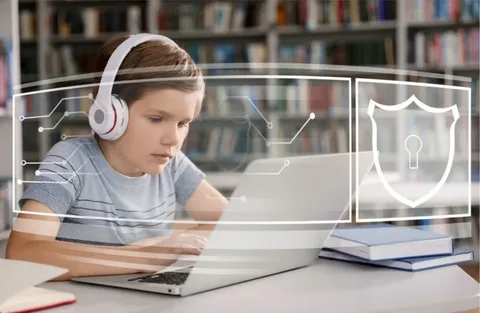The internet opens up a world of opportunities for children to learn, connect with others, and access entertainment. However, it also poses risks like cyberbullying, exposure to inappropriate content, and contact with strangers. As a parent or carer, you play a critical role in helping children stay safe online. The guidance below will explain how to ensure your child’s safety online:
Table of Contents
Talking to Children About Online Safety
Have regular, open discussions with children about online safety from an early age. Explain that the internet can be used for good things, but it also carries risks. Ask them what sites and apps they like to use so you can understand their online activities. Discuss strategies for dealing with cyberbullying, inappropriate content, and strangers online. Stress that you are there to help them, not to ban technology entirely. Teach them to come to you if they feel uncomfortable about anything they see online. Consider signing an informal contract regarding rules and expectations for internet use.
Setting Household Rules and Boundaries
Agree on household rules and boundaries regarding when and how digital devices can be used. Set time limits for daily screen time using parental controls and establish tech-free zones or times, like during meals or after a set time in the evening. Make a rule that children should ask permission before downloading new apps or games. Discuss rules on not sharing personal information and not meeting up with someone first met online. Foster children may have experienced online grooming previously. Reassure them you are there to help keep them safe.
Using Privacy Settings
Enable the strongest privacy settings on children’s social media and app accounts. Do not let them use their full name, share their location, or post identifiable information like school or home address. Check settings regularly as apps are updated. Enable restrictions on who can contact children online and approve new followers/friends.
Monitoring Screen Time and Online Activity
Monitor the time spent on digital devices along with children’s online activities. For younger children, consider supervising the use of the Internet. As they get older, spot-check their browsing history, social media, emails or texts. Let children know you may review their activity not to punish them but to keep them safe.
Seek Advice from Your Fostering Agency
If you are a foster carer needing advice about keeping children safe online, contact your fostering agency. They will be able to advise you on the best way to keep the children in your care safe. For example, they may advise you to purchase additional privacy services or monitoring apps. If they do, foster carers can use their fostering allowance from agencies like fcascotland.co.uk to pay for this.
Using Parental Controls and Tools
Make use of parental controls and filters either through devices, browsers, Wi-Fi networks or third-party apps. These can limit access to inappropriate content, set time limits, and provide monitoring reports. Enable safe search filters on Google and YouTube to limit explicit results. Check children’s laptops, tablets and phones for existing controls. Foster carers can also use the foster care allowance to cover subscriptions to monitoring services if needed. These services will alert them about any concerning online activity.
The online world has many benefits but also real risks for children. Through open communication, agreed household rules, privacy settings, time limits, monitoring, and tools like parental controls, parents and foster carers can help minimise those risks. Work as a team with your children so they feel comfortable coming to you for help. With your support, they can safely learn, play, create and socialise online.
